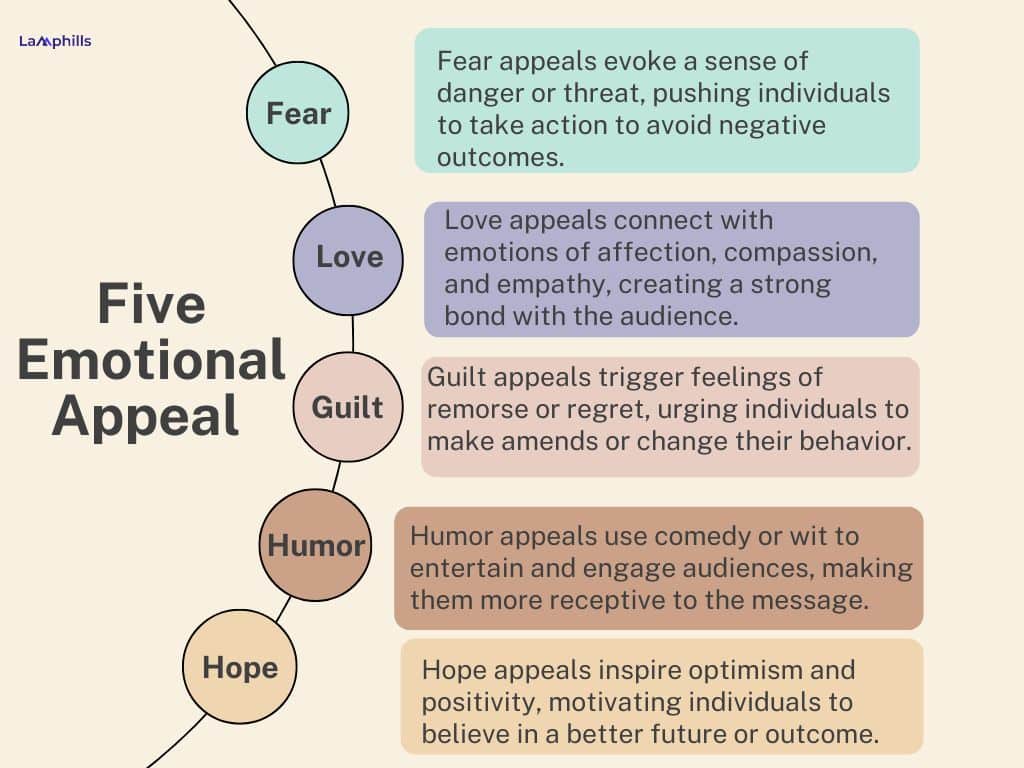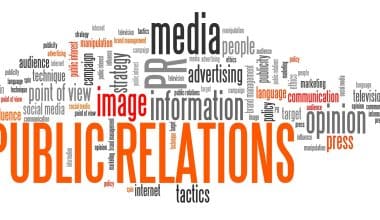Have you ever been so moved by an advertisement that you couldn’t help but feel a tug at your heartstrings? Well, let me tell you, I’ve been there too. I once found myself crying over a commercial for laundry detergent – yes, you heard that right, laundry detergent! But that’s the power of emotional appeal in advertising. It can connect with us on a deeper level, making us laugh, cry, and sometimes even reach for our wallets. In this article, I will show you 13 emotional appeal advertising examples you can copy for your business, organization, etc. I will also explain how you can use the tactics to create impactful campaigns of your own. So, grab your cool drink and get ready to be inspired!
Key Points
- Understanding the emotions, values, and preferences of your target audience is crucial in crafting emotionally appealing ads that resonate with them.
- Narratives that evoke emotion, such as personal anecdotes or inspirational stories, can effectively engage your audience and create a lasting impact.
- Images and videos also have the power to evoke powerful emotions and enhance the message of your ad, making it more memorable and impactful.
- Benefits, not just features can positively impact the lives of your customers, tapping into their emotions and desires.
- While emotional appeal advertising are effective at creating a connection with your audience, don’t forget to include a clear call to action.
13 Emotional Appeal Advertising Examples That You Can Copy
As the famous saying goes, “Emotions drive action.” In my previous article, I explained the power of emotional appeal in advertising and how it can influence consumer behavior. Today, I am excited to share with you 13 emotional appeal advertising examples that you can draw inspiration from:
#1. Nike’s “Just Do It” Campaign
Nike’s iconic slogan “Just Do It” is one of the most recognizable and successful campaigns in the history of advertising. The slogan embodies a message of empowerment and determination. That’s to say, encouraging consumers to overcome obstacles and push their limits to achieve their goals.
Nike’s advertisements often feature athletes showcasing their strength, perseverance, and success, creating a strong emotional connection with the audience. What stands out in this campaign is the motivational aspect that inspires individuals to take action and strive for excellence.
Frankly, this slogan resonates with me on a personal level. It serves as a constant reminder to not give in to doubts or fears, but rather push myself beyond my limits to achieve my goals.
#2. Coca-Cola – “Open Happiness”
When I think of Coca-Cola’s “Open Happiness” campaign, I am immediately transported to moments of joy, togetherness, and nostalgia. The advertisements evoke feelings of happiness and positivity. That’s making me associate Coca-Cola with uplifting experiences and cherished memories shared with loved ones.
Additionally, the campaign successfully creates an emotional connection with consumers. Yeah! It reinforces the brand as a symbol of joy and celebration in my mind. Like other advertising examples, one notable thing in this campaign is the emphasis on the emotional appeal benefits of consuming Coca-Cola with positive emotions, rather than just focusing on the product itself.
#3. Dove – “Real Beauty”
Dove’s “Real Beauty” campaign has been widely praised for its promotion of self-confidence, diversity, and authenticity. The campaign challenges conventional beauty standards by celebrating the uniqueness and diversity of all individuals. Besides, Dove’s advertisements feature real people of all shapes, sizes, and backgrounds. Also, encouraging viewers to embrace their beauty and reject societal pressures.
I am always glued to the TV screen, AdSense, and billboards showing Dove’s adverts. It makes me pamper my body, give it a nice treatment, and more. In fact, most of my cosmetics are Dove products and I have no reason for choosing them but I guess their advert triggers my emotions. Hence, I advise you to copy their emotional appeal advertising strategy.
Besides, Dove’s commitment to promoting a positive body image and self-esteem thereby creates a powerful and inclusive message that resonates with consumers.
#4. Always – “Like a Girl”
The “Like a Girl” campaign by Always holds special significance for me. It challenges societal norms and empowers young girls to break free from gender stereotypes. The campaign’s message of redefining what it means to do something “like a girl” resonates with me. That’s to say, it promotes gender equality and encourages girls to embrace their strengths without limitations.
The campaign inspires me to support and uplift my fellow girls/women. Also, advocating for a world where everyone is empowered to pursue their dreams without restrictions. So, if you’re still looking for emotional appeal advertising examples, Always “like a girl” is a sure deal you can copy.
#5. Budweiser – “Puppy Love”
This Budweiser commercial features a heartwarming story where a puppy befriends a Clydesdale horse. The two animals form a strong bond throughout the ad, showcasing themes of friendship and love. The commercial effectively uses emotional storytelling and relatable characters to create a memorable and touching experience for viewers.
As a viewer, when I watch this ad, I am instantly drawn to the adorable puppies and majestic horses featured in the commercial. The bond shown between the animals triggers me, evoking feelings of warmth and happiness. Truly, the emotional impact of the commercial stays with me long after I have watched it. Also, it creates a positive association with the Budweiser brand.
#6. Extra Gum – “The Story of Sarah & Juan”
In this emotional commercial, Extra Gum tells the love story of Sarah and Juan through the art they create on gum wrappers. The ad follows the couple’s journey from a high school romance to a marriage proposal. Then, all depicted through their shared passion for creating gum wrapper art. The campaign effectively captures the essence of young love and connection, resonating with audiences who appreciate sentimental storytelling. The simplicity and beauty of the emotional appeal of advertising make me reminisce about my own experiences of love and connection. In essence, the emotional connection I feel towards the characters makes me relate to the brand and its message.
#7. Google – “Parisian Love”
As promised, I’ll show you more incredible examples of emotional appeal in advertising. Here’s another excellent example: Google’s “Parisian Love.” Google’s “Parisian Love” ad takes viewers through a series of search queries that tell the story of a person’s journey in Paris. This includes falling in love, starting a family, and facing hardships.
This ad highlights how Google’s search engine can play a pivotal role in people’s lives. Then, capturing intimate moments and personal experiences. By showcasing real-life events in a simple yet emotional way, Google establishes a connection with viewers on a personal level.
#8. Chipotle – “Back to the Start”
Here’s another top-notch emotional appeal advertising you would love for your brand. Chipotle’s “Back to the Start” is an animated short film that addresses sustainable farming and ethical practices. Viewing this ad, I am inspired by the message of promoting a greater cause and making socially responsible choices.
The emotional appeal of the commercial lies in its depiction of the impact of our actions on the environment and society. Not only does it align with my values as a customer, but it also makes me think about how important it is to support ethical practices.
#9. P&G – “Thank You, Mom”
The P&G “Thank You, Mom” campaign is a heartwarming and emotional tribute to mothers everywhere. The advertisement beautifully showcases the sacrifices and unwavering support that mothers provide to their children.
Moreover, acknowledging the critical role of mothers and expressing gratitude for their love, P&G successfully aligns with audiences on a deep emotional level. Hence, I recommend copying this campaign because it covers a lot of things. Firstly, it effectively tugs at the heartstrings of viewers and creates a strong emotional connection that can leave a lasting impact. So, what are you still waiting for?
#10. Amazon – “A Priest and Imam meet for a cup of tea”
Amazon’s “A Priest and Imam meet for a cup of tea” ad is a powerful message of unity and friendship across cultures. The simple act of sharing a cup of tea between a Priest and an Imam highlights the common humanity that binds us all together, despite our differences.
This advertisement promotes inclusivity and understanding, emphasizing the importance of coming together in peace and harmony. By replicating this campaign, you can showcase the power of storytelling to bridge cultural divides and foster relationships based on mutual respect and compassion.
#11. Apple’s “Shot on iPhone” Campaign
Apple’s “Shot on iPhone” campaign stands out for its focus on user-generated content that captures moments of beauty and emotion. By showcasing real-life experiences through the lens of consumers, Apple creates a sense of authenticity and relatability that corresponds with a wide audience.
This campaign allows customers to see themselves reflected in the stories shared, creating a sense of community and connection. For this reason, I suggest you emulate this campaign to engage with your consumers on a personal level. That’s fostering a strong sense of brand loyalty and emotional attachment.
#12. UNICEF – “Unfairy Tales”
UNICEF’s “Unfairy Tales” campaign is a powerful initiative that showcases the harsh realities faced by refugee children creatively and engagingly. Through animated short films, UNICEF brings to light the struggles and resilience of these children, creating awareness and promoting empathy toward their plight.
Personally, watching these “Unfairy Tales” left me feeling deeply moved and compelled to take action to support the vulnerable children featured in the stories. It made me reflect on the privileges I often take for granted. Additionally, it inspired me to support causes that help children in need.
#13. Pampers’ “Love the Change” Campaign
The last but not the least is Pampers’ “Love the Change” campaign. Pampers’ “Love the Change” campaign strikes a chord with parents by capturing the emotional rollercoaster of parenthood – the highs and lows, the joys and challenges.
By focusing on the universal experience of raising children, Pampers forges a connection with parents who prioritize their child’s well-being. As a parent myself, I found the campaign relatable and heartwarming. It reminds me of the beautiful journey of parenthood despite its ups and downs. So, if you want people to connect to your brand on a personal level, then emulate any of these emotional appeal advertising examples.
Positive Emotional Appeal Advertising
Imagine watching a heartwarming commercial showcasing a father playing with his children in the park, laughing and smiling together. Then, the sun is shining, the birds are chirping, and there is a sense of joy and connection in the air.
Have you ever been moved to tears by an advertisement that touched your heart and left you with a warm, fuzzy feeling inside?
Positive emotional appeal advertising is a powerful marketing strategy that aims to evoke positive emotions in consumers, such as happiness, love, nostalgia, or inspiration. By tapping into these emotions, advertisers can create a strong bond between the brand and the consumer. Then, leading to increased brand loyalty and customer engagement. Some examples of positive emotional appeal advertising include:
- Dove’s “Real Beauty” campaign
- Coca-Cola’s holiday ads
- Always “Like a Girl” campaign
- Budweiser’s emotional Super Bowl commercials, etc.
These advertisements not only promote the products or services of the brands but also connect with consumers on a deeper, emotional level. Therefore, when you align with your audience’s emotions, positive emotional appeal advertising can leave a lasting impact and create a positive perception of your brand. Also, read this My Best Strategies For Audience Engagement With Free Template
What Are The Five Emotional Appeal?
When it comes to convincing or persuading others, one of the most effective techniques is to appeal to their emotions. Emotional appeals tap into people’s feelings, beliefs, and values, making them more likely to connect with the message being conveyed. Hence, here are five primary emotional appeals commonly used in persuasive communication:
#1. Fear: This appeal aims to create anxiety or concern in the audience to prompt them to take action or avoid certain outcomes.
#2. Love: By appealing to themes of affection, compassion, or empathy, this emotional appeal seeks to create a connection with the audience based on positive emotions.
#3. Guilt: Guilt as an emotional appeal involves highlighting feelings of responsibility or remorse to influence behavior or decision-making.
#4. Humor: Using humor can create a sense of amusement or joy in the audience, making the message more engaging and memorable.
#5. Hope: Hopeful emotional appeals focus on inspiring optimism, aspirations, or a positive outlook for the future to motivate the audience.

What Is Emotional Appeal Technique?
Let’s consider a nonprofit organization that is raising funds for homeless shelters. In their advertisement, they may show heart-wrenching images of homeless families living on the streets during winter, including children shivering in the cold. By tugging at the audience’s heartstrings and generating feelings of compassion and empathy, the organization aims to encourage viewers to donate money to support their cause.
In essence, the emotional appeal technique is a persuasion method used to evoke feelings and emotions in the audience to influence their attitudes or decisions. This technique aims to create a strong emotional connection with the audience to make them more receptive to the message.
Meanwhile, I have compiled different emotional appeal techniques you can explore in your business. So, download the document below!
Different Emotional Appeal Techniques You Can Explore In Your Business
What Is An Emotional Appeal Example?
An emotional appeal example is a type of persuasive technique that aims to evoke specific emotions in the audience to influence their feelings and decision-making. One common example of an emotional appeal is using heart-wrenching stories or visuals to trigger feelings of empathy or compassion in viewers.
For instance, a charity organization may showcase images of starving children to evoke a sense of urgency and compel viewers to donate. So, by appealing to emotions such as guilt, sympathy, or sadness, advertisers, politicians, and activists seek to connect with their audience on a deeper level and prompt them to take action.
What Is Emotional Advertising Marketing?
Emotional advertising marketing is a marketing approach that aims to create an emotional connection between the brand and the consumer. It involves using emotions such as happiness, sadness, fear, or nostalgia to evoke a response from the audience. This type of marketing strategy focuses on appealing to the consumer’s emotions rather than simply providing information about the product or service.
One successful example of emotional advertising marketing is the “Share a Coke” campaign by Coca-Cola. By personalizing their packaging with popular names and relationship labels, Coca-Cola created a sense of connection and belonging among consumers, leading to increased sales and brand affinity.
What Is An Example Of Emotional Advertising?
An example of emotional advertising could be a commercial for a popular soda brand. The advertisement could feature a storyline where a grandfather passes down a traditional family recipe for a soda drink to his grandchild. As they prepare and enjoy the soda together, the ad could flashback to heartwarming moments of the family enjoying the same drink over the generations, creating a sense of connection and nostalgia.
By using the emotions of family bonding and tradition, this commercial would aim to create a sentimental and emotional connection with the audience. The use of nostalgic elements and heartfelt moments can evoke feelings of warmth and familiarity. That’s making you and I (the viewers) more likely to associate those positive emotions with the brand and its products. In this way, emotional advertising can go beyond simply promoting a product to creating a lasting and meaningful connection with the consumers.
Why Use Emotional Appeal In Advertising?
Have you ever wondered why emotional appeal is such a powerful tool in advertising? As a seasoned marketer, I can attest to the fact that emotions play a significant role in consumer decision-making. When you know people’s feelings, you can create connections with your target audience on a deeper level. Also, when consumers feel emotionally engaged with a brand or product, they are more likely to remember it, trust it, and ultimately make a purchase. Whether it’s invoking a sense of nostalgia, excitement, fear, or joy, emotion-driven campaigns can leave a lasting impact on consumers.
Moreover, using emotional appeal in advertising can help differentiate a brand from its competitors. Let’s look at today’s market, where consumers are bombarded with countless ads daily, standing out is crucial for success. By evoking emotions such as empathy or happiness, you can create a unique identity for your brand that corresponds with consumers.
Additionally, emotional advertising fosters brand loyalty and advocacy. I mean customers who feel a strong emotional connection with your brand are more likely to become repeat purchasers and recommend the brand to others. Amazing, huh? So, ultimately, harnessing emotional appeal in advertising can drive brand awareness, engagement, and sales.
Final Thoughts
Incorporating one or more of these emotional advertising examples into your brand strategy can help you stand out in a competitive market. They’ll help you attract new customers and retain existing ones. Remember to be authentic and genuine in your approach to emotional advertising, as customers can quickly see through insincere efforts. By connecting with your audience on an emotional level, you can create a lasting impact on your business’s success.
Related Articles
Brand Advertising: Elevating Your Brand Awareness
Marketing vs. Advertising: Building a Growth Engine for Your Business
BROADCAST MEDIA: Best Practices In 2024 (Updated!)






